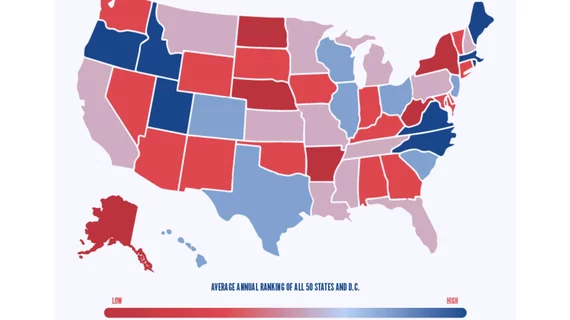Where does your state place on hospital safety?
Maine has topped all states in two separate five-year categories of hospital safety—percentage of “A” grade hospitals (57.1%) and average annual placement in these rankings (3.63). How did your state do?
The numbers were crunched by Grand Canyon University in Arizona using safety data collected by the Leapfrog Group in Washington, D.C., according to a GCU blog post.
The “A” grade reflects preventable accidents and medical errors occurring at an admirably low rate.
Here are some of the key results.
Top 10 states by percentage of “A” grade hospitals, 2016 to 2020:
- Maine 57.1%
- Virginia 52.8%
- Oregon 51.7%
- Idaho 51.6%
- Hawaii 50.8%
- Rhode Island 50.5%
- Massachusetts 48.6%
- Utah 45.6%
- North Carolina 45.6%
- Wisconsin 45.3%
Top 10 states by average annual ranking over time, 2016 to 2020:
- Maine (3.63)
- Oregon (5.25)
- Virginia (5.25)
- Rhode Island (7.13)
- Massachusetts (7.25)
- Idaho (8.25)
- North Carolina (8.75)
- Utah (9.63)
- New Jersey (10.50)
- Hawaii (11.38)
To see the full results, click here.

